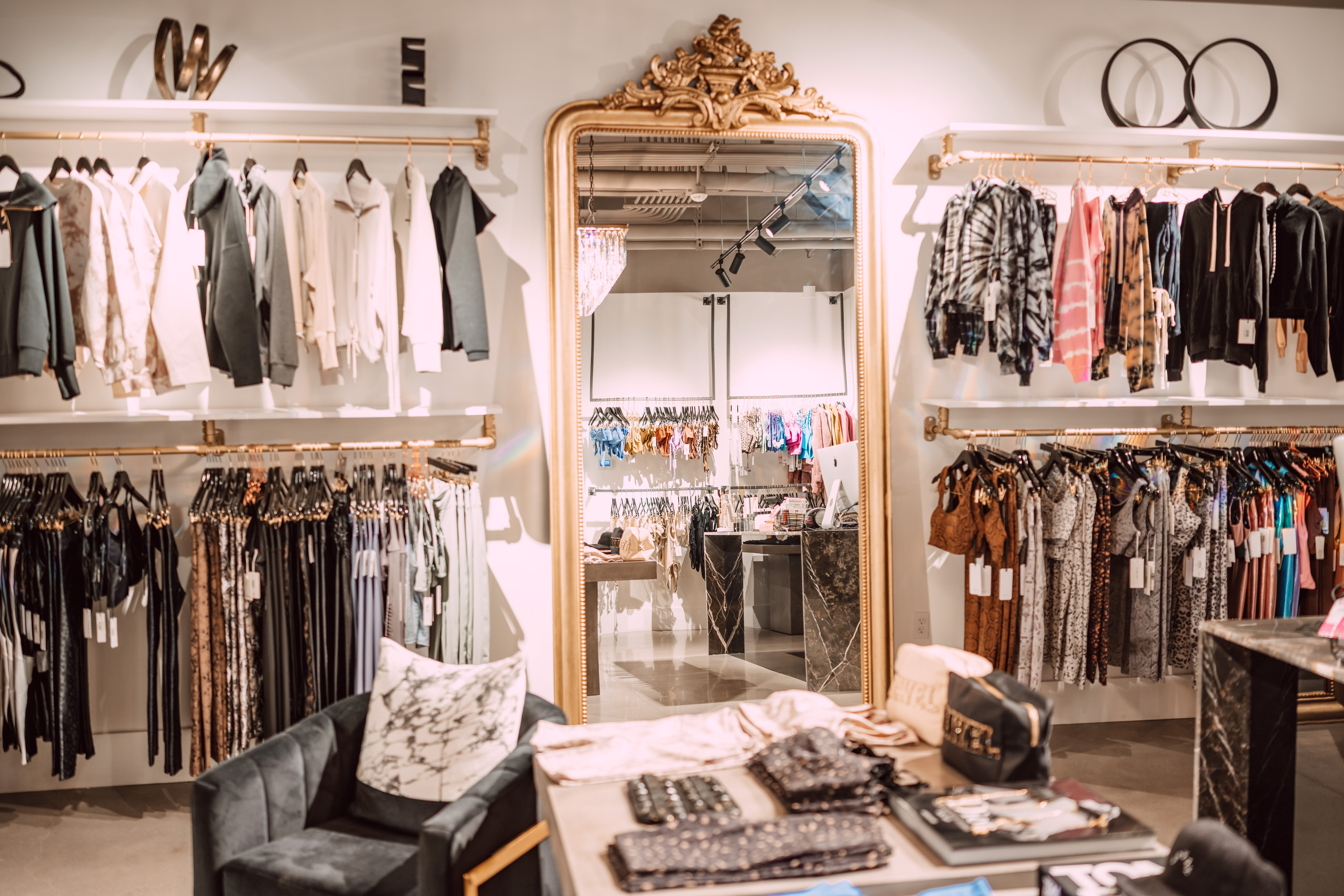Checking Out the Advancement and Impact of Garments on Modern Fashion Trends
The advancement of clothing has actually considerably influenced contemporary fashion fads, merging historical criteria with cutting-edge developments. Famous numbers like Coco Chanel and Yves Saint Laurent revolutionized the apparel industry by presenting principles that focus on convenience and accessibility, which remain to resonate today. On the other hand, technical strides in locations such as 3D printing and clever fabrics are redefining style opportunities and customer experiences. In addition, the growing emphasis on inclusivity and sustainability is reshaping market requirements. As we think about these complex impacts, one must question how these elements collectively redefine fashion's function in showing and shaping contemporary culture.
Historic Style Influencers
In the tapestry of fashion background, certain figures have actually left an indelible mark, forming the patterns and designs that define whole ages. Coco Chanel, an advanced designer, redefined women's style by presenting comfortable, elegant clothing that departed from limiting corsets.
Elsa Schiaparelli is another critical figure, renowned for her avant-garde layouts that incorporated surrealist art, teaming up with Salvador Dalí to create whimsical items that tested conventional visual appeals. Her ingenious usage of color and strong patterns resounds in modern fashion. Yves Saint Laurent, at the same time, democratized high fashion with prêt-à-porter collections, bringing path designs to the masses and setting a precedent for contemporary ready-to-wear lines.
These dreamers, among others, not only changed fashion in their times yet also set sustaining patterns that reverberate in today's fashion business, providing a structure upon which contemporary developers continue to construct and innovate. Their legacies underscore the value of creative thinking and daring in style's ever-evolving story.
Technological Advancements in vogue
In the middle of the dynamic landscape of the garment industry, technological innovations stand at the forefront of innovation, reshaping just how designers create and consumers engage with fashion. The combination of 3D printing has actually transformed layout procedures, making it possible for designers to try out complicated structures and sustainable materials that were previously impossible. This modern technology promotes fast prototyping, minimizing waste and expediting manufacturing times.

Smart textiles, installing innovation into textiles, are likewise transforming the industry. Developments like temperature-regulating and self-cleaning materials provide improved capability and comfort. Wearable innovation, integrating attributes like fitness monitoring and interaction, adds a brand-new measurement to style, merging aesthetics with functionality.
Social Shifts and Style
As technological developments remain to reshape the apparel industry, social changes are similarly prominent, redefining style and consumer preferences. In the last few years, the increase of social networks systems has actually increased the circulation of worldwide fashion patterns, allowing varied cultural impacts to merge and exist side-by-side. This electronic interconnectivity has actually facilitated the rapid exchange of ideas, bring about a more diverse and comprehensive analysis of style that shows the complex nature of modern-day culture.
Social recognition and appreciation have actually motivated developers to attract ideas from a more comprehensive range of historic and ethnic contexts, incorporating conventional themes with modern aesthetic appeals. This combination has led to fashion that resonates with a wider audience, promoting a sense of identity and belonging across different demographics. Furthermore, the enhancing need for customization has actually driven brand names to offer customizable alternatives, making it possible for customers to share individuality while reflecting their cultural heritage.
Moreover, changing societal worths have influenced fashion, with inclusivity and diversity ending up being central motifs. The market has actually begun to welcome designs and influencers of numerous physique, ethnicities, and sex identities, tough traditional elegance requirements. This transformation highlights the power of cultural shifts in shaping the future of fashion, as style ends up being a more genuine expression of collective and individual identity.
Sustainability and Modern Design
While the apparel industry proceeds to develop, the necessary for sustainability has come i loved this to be increasingly urgent, affecting modern style techniques. This shift intends to address ethical considerations and ecological problems, resulting in a reevaluation of typical manufacturing methods. Designers are now incorporating lasting products, such as organic cotton, recycled polyester, and eco-friendly materials, right into their collections, lowering the ecological footprint of fashion. The increase of sluggish style, which stresses top quality over amount, encourages consumers to purchase timeless pieces rather than short-term patterns.
Moreover, modern-day layout is identified by its innovation in lessening waste and promoting circularity. Methods such as zero-waste pattern cutting and 3D knitting are acquiring grip, permitting designers to develop garments with marginal fabric wastage. Furthermore, brands are adopting transparent supply chains, making certain accountability and fostering customer trust. This approach not just minimizes ecological influence but additionally boosts the social responsibility of fashion homes.

Future Trends in vogue

Sustainability will remain to be a driving force in forming future fashion fads. The market is increasingly taking on eco-friendly products and more ethical manufacturing methods, reacting to a growing customer demand for liable methods. Developments such as bio-fabricated products and closed-loop recycling systems are established to redefine how garments is created and consumed, minimizing environmental influence while maintaining design and quality.
Social changes, including the rise of inclusivity and variety, will additionally play a pivotal duty. As society becomes a lot more knowledgeable about social concerns, fashion is expected to come to be a platform for expression and modification. Developers will likely concentrate on producing collections that mirror a wider array of identifications and experiences, promoting depiction and ease of access.
Verdict
The evolution of garments significantly affects contemporary style trends, where historical impacts combine with modern designs. Key numbers like Coco Chanel and Yves Saint Laurent have actually redefined design, while technological developments such as 3D printing and wise fabrics increase innovative opportunities. Cultural shifts towards inclusivity and sustainability force brand names to take on moral practices and check it out embrace variety. This recurring advancement emphasizes style's duty as a mirror to social worths and technical development, suggesting a future rich with development and inclusivity.
The advancement of garments has actually considerably influenced modern style fads, merging historical precedents with sophisticated technologies.In the middle of the vibrant landscape of the fashion industry, technical innovations stand at the leading edge of development, reshaping just how developers produce and consumers engage with fashion.While the style market continues to evolve, the vital for sustainability has come to be significantly immediate, influencing modern-day style methods. As sustainability becomes embedded in modern design, it leads the way for a more aware and accountable fashion industry.
The advancement of clothes substantially impacts modern style fads, where historical influences combine with modern styles.